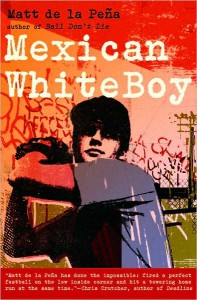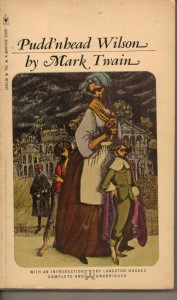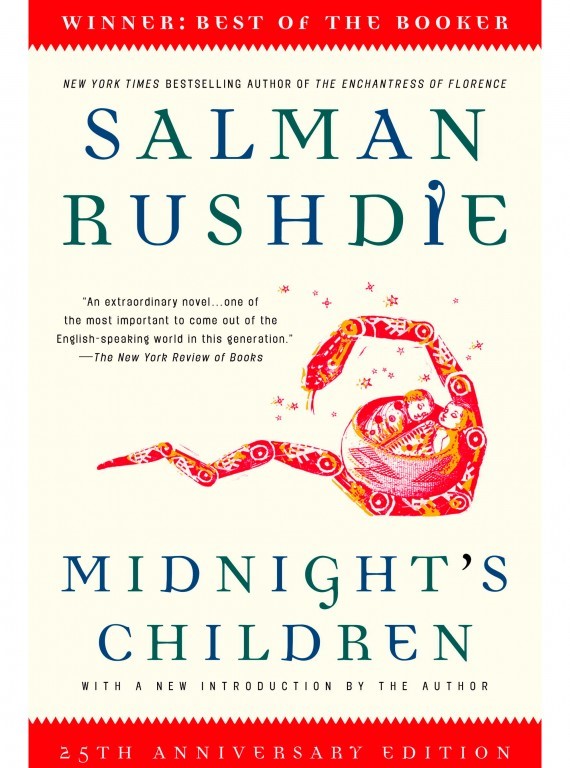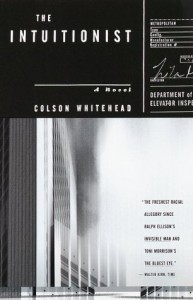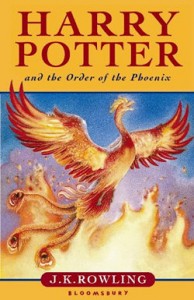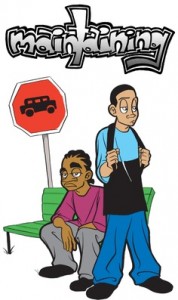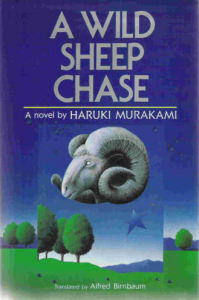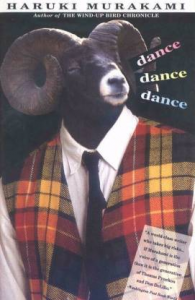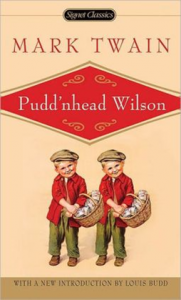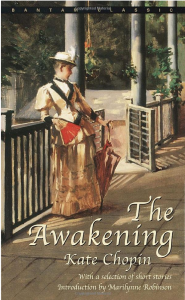Akin Iyapo
Character: Akin Iyapo
Source Text: Octavia E. Butler, Adulthood Rites (1988)
Entry Author: Ilana Yoneshige
Throughout Adulthood Rites there are predictions made about the behavior of Humans, as well as the character development of Akin. Lilith, his Human mother, worries that the resistors will hate Akin more than the other construct children because he is male. She says to Nikanj, her ooloi mate, “They will! He isn’t human. Un-Human women are offensive to them, but they don’t usually try to hurt them, and they do sleep with them – like a racist sleeping with racially different women. But Akin…they’ll see him as a threat. Hell, he is a threat. He’s one of their replacements” (10). This quote is a statement that reflects the real world attitude towards males of another race.
Akin is kidnapped in a raid; the resistors, though they refuse to live alongside the Oankali, decide to kidnap many of the construct children out of a desperation to have children among them. Akin is taken to Phoenix where he learns more about his Human ancestry. Tate and Gabe buy him from the raiders and care for him. In Phoenix, Akin learns that the Humans try to humanize the construct children. Several of the people plot to remove the sensory head tentacles of two of the female construct children; a cosmetic surgery that would be lethal to them. Although Akin recognizes and agrees with the Oankali belief that the Humans, if left alone, would revert to their hierarchical tendencies and self-destruct again, the Human part of him understood the need for freedom and choice. When Akin is rescued and returns to Lo, he and the other construct children convince the Oankali to transform Mars into an inhabitable planet.
Akin is special because he is able to identify with both his Oankali and Human ancestry more than any of the other construct children. He chooses to support both the gene trading between the Oankali and Humans as well as the Mars settlement because he is a mixed race child.
Danny Lopez
Character: Danny Lopez
Source Text: De La Pena, Matt. Mexican White Boy. New York: Delacorte Press, 2008. Print.
Entry Author: James Tyler
Sixteen-year-old Danny Lopez is half-Mexican and lives in comfortable San Diego county; the son of a white mother and an absent father, who walked out on the family when he was a child. Confused over the concept of his own identity, he wonders why his father left the family for Mexico and whether the motivation involved embarrassment over having a biracial son. The novel follows Danny’s experiences on a visit to National City, Mexico, in search of his biological father in Ensenada.
The only other Hispanics Danny has any familiarity with are Mexican people who “do under-the-table yard work and hide out in the hills because they’re in San Diego illegally” (De La Pena, 2). As much as Danny feels like an outsider being a biracial American in San Diego, he feels equally out of sorts in National City, if not more, because he is not fluent in the Spanish language. And, what’s more, not only is he described as “a shade darker than all the white kids at his private school,” but whenever he comes to National City, “where his dad grew up, where all his aunts and uncles and cousins still live – he feels pale. A full shade lighter. Albino almost” (De La Pena, 3).
Hispanics/Latinos are the fastest growing minority within the United States and are expected to constitute a sound majority within several generations, so much so that political scientists have labeled the demographic, “the sleeping giant.” As such, it is almost impossible to define such a demographically diverse population within one subgroup. Class, Nationality, Ethnicity, Biological Race, Politics, and Culture/Language all factor into the definition of what it means to be a Hispanic/Latino. As such, the identity crisis experience by Danny is not at all surprising or unusual.
The literary device De La Pena employs which symbolically unites such a diverse group is Basebal. A skilled pitcher, Danny has a proportionately difficult time succeeding in his favorite sport, as much as he has trouble straightening out his identity conflict, because despite his talent, he is cut from the Baseball team over his lack of focus. But, his first moment of true belonging in Mexico comes while observing the Mexican kids playing Baseball. “He’d give anything to be out there playing instead of standing here watching,” De La Pena writes. “Nobody plays stickball in Leucadia. Why don’t the white kids play stickball? He wonders. Maybe because they have real baseball fields…Or maybe they’ve just never thought of it.” This moment is also how he comes into contact with his first close Mexican friend, the half-black “negrito,” Uno, even if his first contact with Uno is by getting knocked out.
As a Hispanic-American who was raised in a predominantly white suburban environment, the individual obstacles presented to Danny Lopez, in terms of identity exploration, were so readily identifiable to me that at times it was frightening. De La Pena very well could have gone the traditional route of making Danny the stereotypical “angry half-breed” full of a frustration he can only express in brute violence. On the contrary, Danny Lopez is not only a sensitive character, but a startlingly troubled one, who takes his frustration out on himself. From the beginning the near-mute Danny is struggling with a form of Depression, which he copes with by cutting his wrists. While I have never reached this level of emotional depravity, the conveyed feeling of being “between worlds,” due to language barriers, skin color, or class differences, is such a familiar, relatable emotion that someone being led to that form of self-abuse by it is almost unsurprising to me. With any luck, novels such as this will encourage a greater dialogue and discourse regarding teens with mixed identities and the challenges they face, so that such heartbreaking self-harm will be a thing of the past.
Thomas Chambers
Character: Thomas Driscoll
Source Text: Twain, Mark and Sidney E. Berger. Pudd’nhead Wilson and Those Extraordinary Twins: Authoritative Texts, Textual Introduction and Tables of Variants, Criticism. New York: Norton, 2005.
Entry Author: Jonah Beukman
Mark Twain’s Pudd’nhead Wilson satirizes a culture in which titles and nobility hold significant value. The dominant culture in the novel, which is one of affluence and “whiteness”, is proven to be superficial and false. Twain indicts a society that equates whiteness with nobility and blackness with bad character and complicates this notion with Thomas Driscoll, who is mixed race; his identity is not fixed and his malevolence as a character cannot be linked to biological determinism. Both Tom and his brother Chambers are one-thirtysecond white, yet Chambers is made out to be a benevolent character, whereas Tom is seen as wicked. His role in the social and societal settings of the novel is that of an antagonist, seen mostly in the act of selling his mother, Roxana, down the river as a slave. Yet he is not entirely unsympathetic, and Mark Twain complicates the notion of Tom’s “wicked” identity being due to his race. Tom’s identity as a mixed-race character is put into question in the following passage:
It was the “nigger” in him asserting its humility, and [Tom] blushed and was abashed. And the “nigger” in him was surprised when the white friend put out his hand for a shake
with him. He found the “nigger” in him involuntarily giving the road, on the sidewalk, to the white rowdy and loafer. When Rowena, the dearest thing his heart knew, invited him
in, the “nigger” in him made an embarrassed excuse and was afraid to enter and sit with the dread white folks on equal terms. The “nigger” in him went shrinking and skulking here and there and yonder, and fancying it saw suspicion in all faces, tones, and gestures (49).
Mark Twain puts into question several dichotomies here which relate to mixed-race and mixed identity. He satirizes the notion that being black is synonymous with being meek and unassertive, while complicating Tom’s actions as a character. “The ‘nigger’ in Tom” refuses to acknowledge white individuals. He “involuntarily gives the road” to white individuals who are not necessarily worthy of his respect as an act of deference. The word involuntarily suggests that at least part of Tom’s identity is inherent regardless of race, despite Twain’s false and superficial claim that “blackness” is on par with being evil. Tom also refuses to accept Rowena, “the dearest thing [that] his heart knew” inside, indicating that his black identity satirically informs sexual meekness as well. Tom goes “shrinking and skulking here and there and yonder” as a further indicator of Twain’s indictment of the waywardness of Black individuals. Black individuals may be wayward, according to Twain, but Tom’s mixed race and his acknowledgment of the dual identities that comes from both his “white” and “black” identities make him a character that defies the status quo. Twain himself defies the status quo as an author here through Tom’s duality in identity, which represents a prototype in post-structuralist thought
Saleem Sinai
Character: Saleem Sinai
Source Text: Rushdie, Salman. Midnight’s Children. 25th Anniversary ed. New York: Random House, 2006. .
Entry Author: Shalyn Hopley
James Fulton
“I always knew they didn’t have the same daddy, but I didn’t know his (Fulton) was a white man.”
“Who else knows that Fulton was colored?”
“But he wasn’t who he was. He passed for white. He was colored.”
“Fulton’s hatred of himself and his lie of whiteness”
In Colson Whitehead’s The Intuitionist, James Fulton is the elusive, sought after inventor of the Intuitionist school of thought and author of four renowned volumes on theoretical transport. Although he passes away prior to the start of the novel, his legacy leaves a haunting omniscience that leaves much to be uncovered and explored as the story unfolds. For protagonist Lila Mae, the first black female elevator operator praised for her keen intuiting abilities, the struggle to discover the man behind James Fulton and his confidential theory on the “black box” becomes a testament to Lila Mae’s own self discovery.
As a pioneer of intuitionist ideology Fulton’s presence in the novel is largely indirect and unobtrusive, seeping through the text in brief interludes during Lila’s moments of deep contemplation. Throughout the narrative, excerpts from Fulton’s “Theoretical Elevators” are caught between chapters, and introduce certain sections of the book, though most indiscreetly. Like Lila Mae, we as readers attempt to uncover the mystery behind Fulton’s largely allegorical concepts such as the “thin man convention” and the “Occupant’s Fallacy” (38). At first glance, Fulton’s ideology seems highly probably in conjunction with dry, repetitious elevator terminology. In fact, the fallacy of the thin or obese man who is not considered for the standard occupancy of a residential elevator of 12 passengers seems highly believable, however, we as readers fail to notice the undeniable parallel between the “thin man convention” and Fulton’s secret analogies hidden within the text.
Though we are given little information on the character or background of Fulton, aside from the acclaimed excerpts strewn about the novel, his message is far from audible. For Fulton, the black box is “the second elevation” in which there is “no need for safety devices because there is only up…” (182), which is, in its entirety, the perfect ascension is a gateway towards a classless society unconstrained by racial boundaries. However, Lila Mae’s discovery of Fulton’s mixed racial background towards the novel’s conclusion lends contextual significance to Fulton’s claim for vertical uplift. In fact, Fulton’s identity as a figure of mixed racial inheritance, the combination of a white father and black mother, completely alters the arrangement of the fixed, pre-existing social and political backdrop of the novel. Prior to Lila Mae’s discovery, The Intuitionist’s world of elevator inspection is a metaphorical representation for a society hindered by social division, each group designated and confined to their own “boxes”. The tension between the Empiricists, a selective group of dominant white alpha males who dedicate their professions to rationality and reason, and the intuitionists, the seemingly inferior competitor who treats inspection with passion and gut feeling, elicits a symbolic comparison to a more palpable reality of racial hierarchical divisions.
Fulton’s hidden identity has allowed him to pass in a society that if revealed, would have never allowed him access or authorship of such a highly revered position. Because he looks white, he passes as someone with unquestionable agency in the field of Intuitionism, and one that he uses in efforts to reimagine a system already established. Concealed by texts administered for Intuitionist training, Fulton’s theories were a reminder of “the hatred of the corrupt order of [the] world, the keen longing for the next one, its next rules.” (232) As Lila Mae is forced to interpret what she terms, “a big joke,” “the perfect liar that world made him, mouthing a supreme fiction the world accepted as truth,” the black box becomes less of an obtainable object. Rather, it imagines a means for a presently unimaginable society, a place that would have accepted Fulton no matter what color he was to the rest of the world.
Tom Marvolo Riddle
Character: Voldemort
Source Text: Rowling, J.K. Harry Potter series. Bloomsbury, U.K.: Bloomsbury Publishing, 1997. Print.
Entry Author: Elizabeth Valinski
Tom Riddle was a half-blood wizard born to a muggle man and female witch. While younger, he had black hair, dark eyes, tall and considered handsome. After regaining his body in the fourth book, he had pale skin, skull-like face, slits for nostrils, red eyes and a skeletal body with unusually long fingers.
Known as Lord Voldemort, he is the heir of Salazar Slytherin and considered the most powerful Dark Wizard of all time. His mother gave his father a love potion without him knowing, and when it wore off and his mother became pregnant with him, his father left. His mother died in childbirth, and he was sent to a muggle orphanage until he attended Hogwarts. According to the Headmaster Dumbledore, Tom Riddle was the most talented student. He appeared to be extraordinarily handsome and extremely polite. However, deep under he was cruel, manipulative, psychopathic, and downright evil. He is soon called “Voldemort.”
Voldemort is the most hated wizard of all times because of his ideas and actions. He thought that purebloods should rule the Wizarding World, and was against muggles ever stepping foot there. Ironically, he is a half-blood, and his lack of accepting of who he really is eventually leads to his downfall. He is devoid of human responses as well as emotions and gets off murdering people, especially muggles, for fun.
“Voldemort: “You do not seek to kill me, Dumbledore? Above such brutality, are you?”
Dumbledore: “We both know there are other ways of destroying a man, Tom. Merely taking your life would not satisfy me, I admit.”
Voldemort: “There is nothing worse than death, Dumbledore!”
Dumbledore: “You are quite wrong. Indeed, your failure to understand that there are things much worse than death has always been your greatest weakness.” (Order of the Phoenix)”
He is a key character because he is constantly striving to become all-powerful and advocates for pure-bloods only, but it is ironic because he struggles with accepting who he really is: a half-blood. It’s interesting to see the struggles of a mixed race human through magical realism. Voldemort wants to be heard and yearns for respect, but because of his inability to accept his mixed race, he becomes defensive and channels his frustration and anger through his murderous actions.
Marcus
The Sheep Man
Character: The Sheep Man
Source Text: Murakami, Haruki. A Wild Sheep Chase. Tokyo: Kodansha International, 1989. Print.
Entry Author: Mike Steigman
A WILD SHEEP CHASE
The Sheep Man is believed to be part sheep and part human, he appears out of the blue as an apparition to the main character searching for his friend in the mountains north of the Junitaki township. Interestingly, his mixed identity is quite literally all he has to his name. The “sheep” in “Sheep Man” comes before “man” insinuating he is more animal-like than human. Upon his entrance, Murakami states, “The Sheep Man wore a full sheepskin pulled over his head. The arms and legs were fake and patched on, but his stocky body fit the costume perfectly. The hood was also fake, but the two horned that curled from his crown were absolutely real (251).
He loses his temper with the main character after being questioned too much, but quickly regains his composure. The sheep man then apologizes to the main character because “sometimes it’s like the sheep in him and the human in him are at odds so he gets like that” (254).
He speaks human language, yet all of his sentences in the narrative are void of any spaces or capitalization, so it’s difficult to distinguish one word from another. One can say his words sound like animal noises in this sense. His basic qualities are reminiscent of a Neanderthal. He is attentive to polite behavior, yet flees at the first sign of violence, even metaphorical like when the protagonist raises his voice. The main character goes further to say, “The sheep man was just like an animal. Approach him and he’d retreat, move away and he’d come closer. As long as I wasn’t going anywhere, there was no hurry” (254). By being part-animal, the Sheep Man is unable to form any emotional ties with the protagonist, therefore further isolating both the main character as well as himself.
Murakami deliberately chooses to blend this man with a sheep in order to extract some of his humanity and highlight his weaknesses. The Sheep Man reveals the reason he hides out in the wilderness is because he didn’t want to go off to war, because members of the Junitaki Township went off to fight in the Russo-Japanese war. He claims he didn’t know who he would be fighting, he just knows he didn’t want to go. And “that’s why he’s a sheep.”
However, there’s a distinct binary evident in partially being a sheep. Sheep are herded by one person, with all their choices made for them by the shepherd. Once divided from the flock, a sheep is left with little direction. Animals are also typically perceived as strong, unstable, wild creatures. Centaurs and lycanthropes, part human and part animal, are mystical creatures, wise and fierce beyond human capabilities. Murakami plays with this notion while simultaneously categorizing, in his name, a mixed-race/species character, arguing that a double identity can weaken one’s abilities just as it can fortify them.
Lastly, The Sheep Man tells the protagonist, who had originally traveled to the Junitaki Township with his girlfriend had forced her to return to the Dolphin Hotel. He assures the protagonist that she didn’t want to be there and she doesn’t belong. The Sheep Man disappears as quickly as he entered in the novel, without explanation.
DANCE, DANCE, DANCE
The Sheep Man reappears in this novel, along with the main character. His mask has become grungy, his horns dilapidated, and he looks significantly older. This time, the Sheep Man appears where he had supposedly sent the main character’s girlfriend in A Wild Sheep Chase, the Dolphin Hotel. The main character presses a button in the elevator, and suddenly it opens its doors on a floor, pitch-black. The elevator refuses to move, so the main character exits to the floor and finds The Sheep Man sitting behind a desk. The Sheep Man speaks in the second person, constantly asking the narrator to tell “us” what’s going on outside as “we” want to know.
The Sheep Man’s costume appears more dingy than “last time”, his stature shorter and his breathing heavier. He advises the main character that he has to dance and keep on dancing, that is the only way to not lose direction.
Toward the end of the novel, the main character visits The Sheep Man together with Yumiyoshi, his girlfriend, but The Sheep Man has vanished. Reminiscent of A Wild Sheep Chase, The Sheep Man appears unable to exist alongside a partner of the protagonist. All that remains are clippings and yellowing pages about sheep that The Sheep Man had been guarding. They are now abandoned with no one to care for them. Having lived away from war and civilization, The Sheep Man grows older and older until he disappears into irrelevance, with any hope of peace from future wars disappearing along with him.
Tom Driscoll (Valet de Chambre)
Character: Tom Driscoll (Valet de Chambre)
Source Text: Mark Twain, The Tragedy of Pudd’nhead Wilson (1894)
Entry Author: Adam Kelley
The character known throughout the text of Puddn’head Wilson as Tom Driscoll, a white southern aristocrat, was actually born Valet de Chambre, a mixed race child born a slave, but was switched at birth by his slave mother Roxana, “Roxy”. Chambers, hereafter referred to as Tom, ‘passes’ as the son of Judge Driscoll, descended from the “First Families” of aristocratic “Old Virginia” lineage. Tom’s real identity is later revealed using forensic evidence that proves his birth, but his appearance and success as an imposter challenge 19th century notions of racial identity. Tom, is born a ‘black’ slave by the ‘one drop’ rule, lives half his life as free white man of a locally respected family, and is ultimately revealed and sold back into slavery. The irony of his fate draws out the arbitrary nature of socially and legally constructed racial identity.
The imposter Tom’s race is known through his mixed race mother Roxy. The narrator describes her as “white as anybody, but the one sixteenth of her which was black out voted the other fifteen parts and made her a negro” (Twain 9). Twain’s matter-of-fact tone parodies the absurd nature of 19th century legal definitions of race. He presses this point farther when he describes of Roxy’s son that “he was thirty-one parts white, and he, too, was a slave, and by a fiction of law and custom a negro” (9). Both Roxy’s and her child’s racial status is defined legally in terms of the “one drop rule” that defines them as slaves by descent.
Physically, Roxy’s son ‘Chambers’ and the child Tom Driscoll appear identical. Twain describes of Chambers that “he had blue eyes and flaxen curls, like his white comrade” (9). The only discernable marker between the two infants is their clothing: the Driscoll child dressed in the finest garb and ornament, and Chambers stuffed into a “course” shirt that “barely reached his knees” (9). This further links the racial identity of the children to social cues imbedded in status symbols, and not in anything inherent in the children themselves.
Later in life the imposter Tom is informed by his mother that he was switched at birth and this has a devastating effect on his sense of self. After the revelation he wakes in the morning to exclaim the infamous lines “‘A nigger!—I am a nigger!—oh, I wish I was dead!’” (48). Profoundly disturbed by the news of his origin, Tom’s personality is shattered and he immediately begins to internalize the racial stereotypes he once cast on others. He feels “the curse of Ham upon him” (49) and “the ‘nigger’ in him was ashamed to sit at the white folks table” (49). He becomes deeply aware of his vulnerability under the law, and lives his life in constant fear of being found out.
All of Tom’s social relationships become inverted: his mother, once his slave, now lords her secret knowledge of his identity over him, and his perception of his relationship to his Uncle and his community alters drastically from entitlement to suspicion. His drastic shift in mood draws out the effects of racial prejudice on the marginalized of society. Tom is unwittingly forced into the position of ‘passing’ as white, and grows up oblivious of his origin. But, once he learns his true origin, he immediately begins to question his own identity and alters his personality and behavior. Nevertheless, Tom is consistently a despicable character: callous, cruel, and manipulative, but his punishment of being “sold down the river” feels unjust even for such an unlikable person. Tom, although being guilty of multiple counts of theft and even a murder, is ultimately punished merely for being a fraction ‘negro’.
Armand Aubigny
Source Text: Chopin, Kate. The Awakening: With a Selection of Short Stories. 1899. Reprint. New York City: Bantam Dell, 1981. 177-182. Print.
Entry Author: Emma Baker
In Kate Chopin’s short story, “Desiree’s Baby,” Armand Aubigny is the father of the titular child and the husband of Desiree. Belonging to a well-known, respectable Creole family, he owns a plantation called L’Abri that he inherited from his father. He spent his childhood in Paris until his mother’s death, and returned home to the United States with his father. Presumably, he lived with his mother when she was still alive. His role in the short story focuses on falling in love with Desiree, the adopted daughter of the Valmondés, another well-known creole family. Although Desiree comes from an ‘obscure origin,’ as the Valmondés found her around the ‘toddling age’ near the gateway to their home, Armand initially finds that no obstacle to marriage instead asserting, “What did it matter about a name when he could give her one of the oldest and proudest in Louisiana?” However, while his father treated the slaves under his ownership with kindness, “Young Aubigny’s rule was a strict one, too, and under it his negroes had forgotten how to be gay.” (Chopin, 177)
As such, Chopin positions Armand Aubigny as the character with the most power in his societal context. He is male, wealthy, and at the start of the story, both the reader and the surrounding characters believe he is white. One can see evidence of his exercise of this power in the treatment of his slaves as well as evidence of prejudice and racism. He seems reasonable in his acceptance of a nameless wife whose origins are unknown at the start of the novel, but after the birth of their child one perceives changes in his behavior. Others notice the child’s skin tone before he does but he begins to absent “himself from home; and when there, avoided [Desiree’s] presence and that of her child, without excuse.” (Chopin, 179) After Desiree herself realizes the similarity to one of the quadroon boys of La Blanche, a mulatto slave, she pleads with Armand to tell her what it means. He only responds, “it means…that the child is not white; it means that you are not white.” (Chopin, 180) Armand is not suspected to be the reason for the child’s quadroon appearance, as Desiree’s origin is unknown. As she attempts to defend herself by naming her features, he cruelly responds, “As white as La Blanche,” (Chopin, 180) demonstrating that the physical appearance of whiteness holds no power when one carries ‘black blood.’ Following this, he draws further away from his wife, begins to treat his slaves with a greater cruelty than before and does not prevent his wife from walking unprotected into the bayou with her child never to return. His position in a place of power demonstrates how influential his actions and decisions are on the lives of others around him, as well as highlight the discrepancy between an unknown origin or namelessness and the possibility of having black ancestry.
Chopin does not reveal his parentage until the last lines of the story. As he burns all of Desiree’s belongings he finds a letter sent from his mother to his father saying, “I thank the good God for having so arranged our lives that our dear Armand will never know that his mother, who adores him, belongs to the race that is cursed with the brand of slavery.” (Chopin, 182) The reader then retroactively remembers various mentions throughout the story of “Armand’s dark, handsome face,” (Chopin, 179) and when Desiree pleads, “look at my hand; whiter than yours, Armand.” (Chopin, 180) As such, Chopin constructs Armand as a mixed race character who passes for white and maintains, if not enforces, the status quo in order to demonstrate the hypocrisy of the Louisiana culture. In the revelation of his mixed race as the final and pivotal plot-point, Chopin upsets the status quo by suggesting a complete lack of adherence throughout the piece, as well as emphasizing the dire consequences that resulted from adherence to those conventions.


